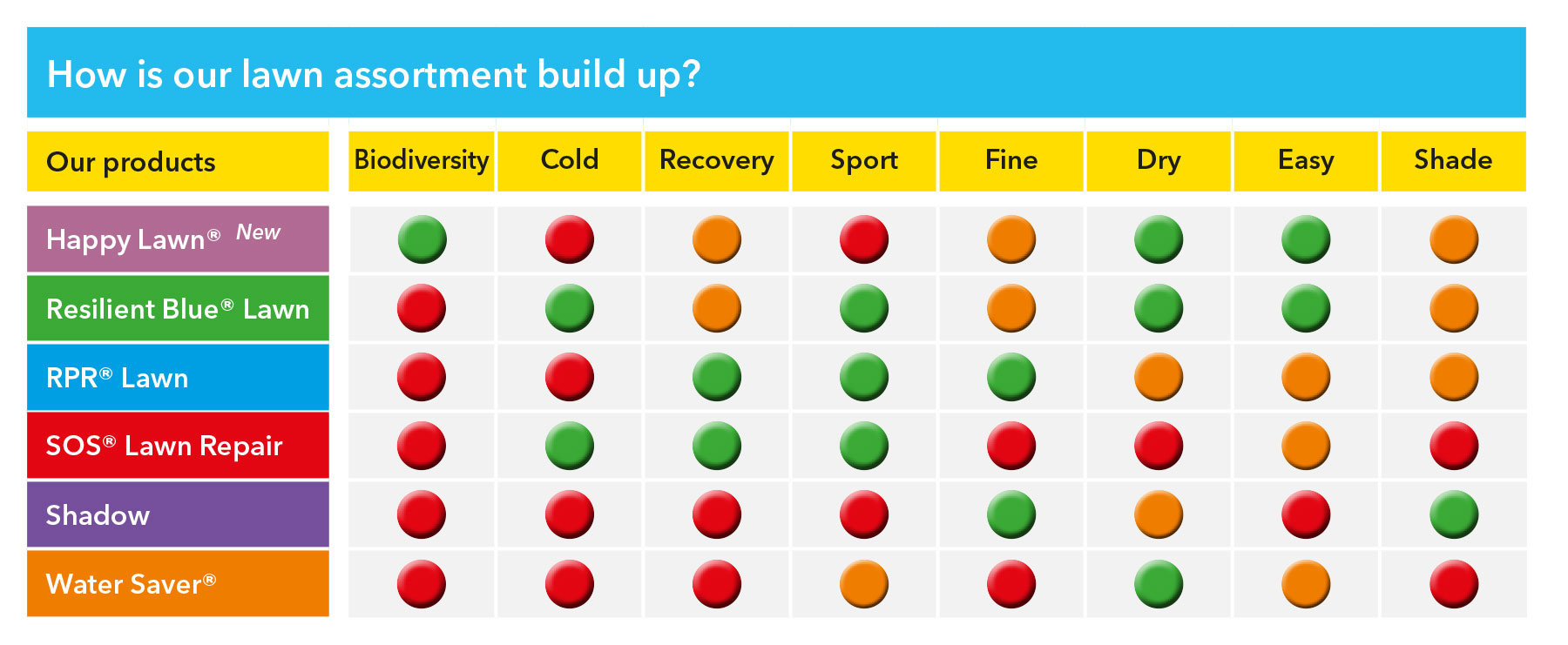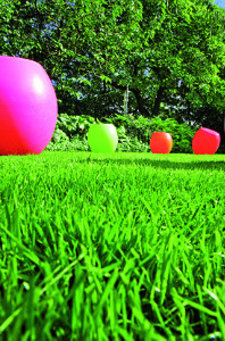Choosing the right mix

- Is it better to sow grass or to lay turf rolls?
- Can products be mixed?
For example, Water Saver and Shadow for a shady sandy soil. - Why do we use grass seed mixtures?
- Which grass is best for grass block pavers?
- Which mixture is best for dry and sandy soil?
Is it better to sow grass or to lay turf rolls? [Top]
Seeding is better, turf is faster. The advantage of seeding is that it does not create ‘disruptive’ layers that can impede water drainage in wet periods. In dry periods, there can also be better capillary action (upward suction) of the soil so there is a better supply of moisture. The disadvantage is that it takes longer for the lawn to be ready for use (about 2 months). The advantage of turf rolls is that the lawn can be used quite quickly after laying.
For example, Water Saver and Shadow for a shady sandy soil. [Top]
This is not recommended. Grass mixtures are balanced to achieve their full potential. Mixing grass mixtures can result in their promised properties counteracting each other. Choose a mixture that best suits your wants and needs.
Why do we use grass seed mixtures? [Top]
There are many types of grass. There are several varieties within each grass species, each of which has its own qualities. For example, one is resistant to wear and traffic, another is resistant to disease or is suitable for dry conditions. A mixture contains several grass species and varieties that reinforce or complement each other to create the product characteristics that meet your needs.
Which grass is best for grass block pavers? [Top]
Grass block pavers combine high load-bearing capacity with a green appearance and the possibility for water to infiltrate into the soil. These pavers are usually laid in a sandy cunette. A cunette is an excavated area in a non-load-bearing, compacted layer of soil in which sand is often applied. This means that little moisture and nutrition are present, while recovery due to traffic and wear is still required. Resilient Blue Lawn handles this situation best.
Which mixture is best for dry and sandy soil? [Top]
For a substrate that is dry and sandy and not watered, Water Saver is the best mixture. This mixture contains grass species that can root down to 80 cm deep and can therefore draw water from deeper layers.


